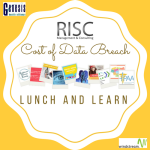Clinical Decision Support System (CDSS)
What is a CDSS?
A CDSS is an interactive decision support system software that can assist clinicians in decision making processes when ascertaining diagnosis on patient data. CDSS products have the ability to connect health observations with a knowledge information network to control alternative treatments to enhance medical practice and judgment. Some products are capable of reviewing and filtering preliminary diagnoses and deducing links between patients with their medical history and forecast events.
A question we have been asked here at RISC is: The Meaningful Use (MU) incentive rule requires that we implement one CDS rule. What is the meaningful use CDS rule requirement for Stage 1 meaningful use?
Answer: The requirement is, “Implement one clinical decision support rule relevant to specialty or high clinical priority along with the ability to track compliance to that rule.” [1. See References below]
Physicians, nurses and other health care professionals use a CDSS to prepare a diagnosis and to review the diagnosis as a means of improving the final result. Data mining may be conducted to examine the patient’s medical history in conjunction with relevant clinical research. Such analysis can help predict potential events, which can range from drug interactions to disease symptoms.
What is Data Mining?
Data mining is sorting through data to identify patterns and establish relationships.
Data mining parameters include:
- Association – looking for patterns where one event is connected to another event
- Sequence or path analysis – looking for patterns where one event leads to another later event
- Classification – looking for new patterns (May result in a change in the way the data is organized but that’s ok)
- Clustering – finding and visually documenting groups of facts not previously known
- Forecasting – discovering patterns in data that can lead to reasonable predictions about the future
What is Evidence-Based Practice (EBP)?
EBP is the practice of applying research to promote quality care and enhanced clinical practice based upon the best evidence from the most recent systematic reviews and meta analyses of randomized controlled trials (RCTs) for clinical information on a stated problem.
Meta-analyses are reviews of literature related to a particular intervention, culminating in the calculation of the effect size of an intervention. Systematic reviews of research (SRRs) are either summaries of the research on an intervention or summaries of what is known about a phenomenon. A rigorous process is used to identify appropriate studies, based on criteria developed by the researcher. The results of studies are synthesized, but no statistics are calculated. Meta-syntheses are systematic reviews of qualitative studies, often resulting in theoretical propositions that can later be tested in practice.
Meta-analyses, SRRs, RCTs, and even meta-syntheses are used to develop clinical practice guidelines (CPGs). Clinical practice guidelines are translated into care protocols, care maps, procedure manuals, and algorithms that are then implemented within institutions. The developers of CPGs consider all of the studies related to a clinical problem.
These evidence-based CDSS facilitate care before, during, and post diagnoses on patients. In addition, CDSS products have capabilities such as monitoring medication orders, preventing duplications, and providing analysis/diagnosis/treatment plan processes, with condition-specific clinical guidelines promoting best practices to improve patient outcomes.
The Health Information Technology for Economic and Clinical Health (HITECH) Act (Meaningful Use) stipulates that healthcare providers must demonstrate MU by 2015 or face reduced Medicare reimbursement in 2016. In addition, Providers are now in the final months to qualify for Stage 1 funds. Eligible Providers (EPs) that have not yet attested have only a brief period left to do so, in order to capture the full amount of incentive funding.
References:
1. http://www.himss.org/content/files/CDS_MU_FAQ.pdf and http://www.cms.gov/Regulations-and-Guidance/Legislation/EHRIncentivePrograms/downloads/EP-Attestation-Worksheet.pdf
2. Melnyk, B. M., & Fineout-Overholt, E. (2011). Evidence-based practice in nursing and healthcare: A guide to best practice (2nd ed.). Philadelphia, PA: Wolters Kluwer/Lippincott Williams & Wilkins.
3. Centers for Medicare & Medicaid Services. (2012). Electronic Health Records Incentive Programs. Retrieved from http://www.cms.gov/Regulations-and-Guidance/Legislation/EHRIncentivePrograms/index.html?redirect=/ehrincentiveprograms
Sponsored by RISC Management & Consulting www.RISCsecurity.com 630.270.9336

















